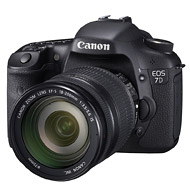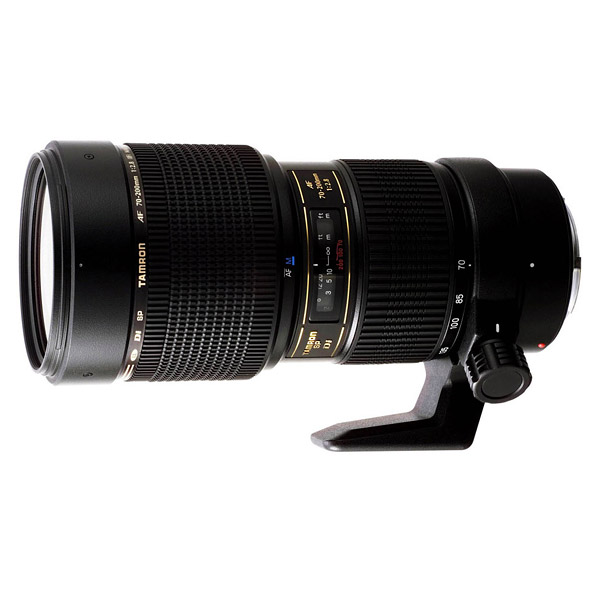What do you think about this photo?Do you have questions or curiosities about this image? Do you want to ask something to the author, give him suggestions for improvement, or congratulate for a photo that you really like?
You can do it by joining JuzaPhoto, it is easy and free!
There is more: by registering you can create your personal page, publish photos, receive comments and you can use all the features of JuzaPhoto. With more than 257000 members, there is space for everyone, from the beginner to the professional.
| sent on September 19, 2012 (12:31) | This comment has been automatically translated (show/hide original)
Very nice ... you can enter shooting data? Molto bella... puoi inserire i dati di scatto? |
| sent on September 19, 2012 (12:53) | This comment has been automatically translated (show/hide original)
Super detail! Wow!
did you use a webcam?
Super dettaglio!
hai usato una webcam?
|
| sent on September 19, 2012 (13:18) | This comment has been automatically translated (show/hide original)
I entered the data release, the f / 11 is due to the fact that the aperture is f/5.6 which seems to offer greater clarity with the 70-200 and 7D, except that with the duplicator to ratios of f/11.
It's actually the same image for the photo "Moon Color 2" obtained by averaging 29 shots, 18 of which with the camera ruotta of 45 °, because I read somewhere that is a good way to rescale the iimagine getting more detail, the fact is that I preferred then reset the image size to which he had collected the sensor (the image was scaled too soft).
All the images I still scaled to 400% to better align them. Ho inserito i dati di scatto, l'f/11 è dovuto al fatto che f/5.6 è il diaframma che sembra offrirmi maggiore nitidezza con il 70-200 e la 7D, solo che con il duplicatore il rapporto diventa f/11.
In realtà è la stessa immagine di partenza della foto "Luna a colori 2" ottenuta mediando 29 scatti di cui 18 con la fotocamera ruotta di 45°, perché ho letto da qualche parte che è un buon metodo per poter riscalare l'iimagine ottenendo più dettaglio, sta di fatto che ho preferito riportare poi l'immagine alle dimensioni alle quali le aveva raccolte il sensore (l'immagine riscalata era troppo soffice).
Tutte le immagini le ho comunque riscalate al 400% per poterle allineare meglio. |
| sent on September 21, 2012 (22:01) | This comment has been automatically translated (show/hide original)
On the issue of color out of the atmosphere has already been said in another post: I personally see the Moon from the Earth, I want the colors as seen from Earth. But experience is not bad, then you are right to do so. We say that is definitely the question ... points of view! ;-)
What I'm not convinced of your Moon are not, however, the colors, the detail: it seems that the image is passed with the artistic filters in PS, you see a little '"mixed". I'd like to see a single shot is not reduced, as it was to understand the details of the raw image.
a greeting
Clear
Sulla questione dei colori fuori dall'atmosfera si è già detto in un altro post: personalmente vedo la Luna dalla Terra, ci tengo i colori di come si vede dalla Terra. Però sperimentare non è male, quindi fai bene a farlo. Diciamo che è decisamente questione...di punti di vista!
Quello che non mi convince della tua Luna non sono però i colori, quanto il dettaglio: sembra quasi che l'immagine sia passata con i filtri artistici di PS, si vede un po' "impastata". Mi piacerebbe vedere uno scatto singolo non ridimensionato, per capire com'era il dettaglio dell'immagine grezza.
un saluto
Chiara
|
| sent on September 22, 2012 (2:14) | This comment has been automatically translated (show/hide original)
Hello Chiara, the idea came from an image of the moon with colors sovrasaturati I saw on the wikipedia page under the name of the moon.
From there you can see that the first result in loading "Luna Color 2" where I had balanced the RGB channels, then this after you have this balance of an arbitrary point close to saturation of the photosite and oversaturated colors.
The talk about the colors we badly dealt with a different image, I understand that for you the moon is yellow because we see yellow when you are at 45 degrees above the horizon, then red when it rises and is almost neutral if we look at it when he is at the zenith?
I would understand if you do not believe that there is something arbitrary in all this and that we need to define a method to standardize the color of one orbject extraterrestrial.
If we do not correct the defect of extinction, we may be able to evaluate the temperature at which a star burns? Looking at the color of the sun without considering that we are seeing more red than it would not be inclined to give an erroneous assessment of the temperature?
And if one wants to take pictures of "art" is free to do so, my want to be a starting point for you to think about this argument is not just ...
More than with practical examples do not know how to explain it.
Tomorrow shortly after a first pulled out to compare the detail shots mediated by the single click you know how it is dominated by the deformations given by the atmospheric turbulence. Ciao Chiara, l'idea è partita da un'immagine della luna con colori sovrasaturati che ho visto sulla pagina di wikipedia sotto il nome della luna.
Da lì il primo risultato che puoi vedere nel caricamento "Luna a colori 2" dove non avevo bilanciato i canali rgb, poi questo dopo aver fatto questo bilanciamento su un punto arbitrario vicino alla saturazione dei photosite e sovrasaturato i colori.
Il discorso sui colori lo abbiamo malamente affrontato su di un'altra immagine, mi sembra di capire che per te la luna è gialla perché noi la vediamo gialla quand'è a 45° sull'orizzonte, poi è rossa quando sorge ed è quasi neutra se la osserviamo quand'è allo zenit?
Vorrei capire se anche tu non credi che ci sia qualcosa di arbitrario in tutto questo e che ci sia bisogno di definire un metodo per standardizzare i colori di un oggetto extraterrestre.
Se non correggiamo il difetto di estinzione, saremmo forse in grado di valutare a quale temperatura brucia una stella? Osservando il colore del sole senza considerare che noi lo vediamo più rosso di quanto non lo sia non saremmo portati a dare una errata valutazione della temperatura?
Se poi uno vuole fare foto "artistiche" è libero di farlo, il mio voleva essere per voi uno spunto a riflettere su questo argomento non da poco...
Più che con esempi pratici non so come spiegartelo.
Domani caricherò un prima dopo per confrontare il dettaglio tirato fuori dagli scatti mediati, il singolo scatto lo sai com'è, è dominato dalle deformazioni date dalle turbolenze atmosferiche. |
| sent on September 22, 2012 (2:42) | This comment has been automatically translated (show/hide original)
this is the result of the average of the shots with camera horizontal mediated in turn with those with the camera to 45 ° (technique that does not riuserei in the future).
I reported the original file to blow up after the individual shots I had quadrupled to align them more accurately. questa è il risultato della media degli scatti con fotocamera orizzontale mediati a loro volta con quelli con la fotocamera a 45° (tecnica che non riuserei in futuro).
Ho riportato il file alle dimenzioni originali dopo che i singoli scatti li avevo quadruplicati per allinearli con maggiore precisione. |
| sent on September 22, 2012 (10:04) | This comment has been automatically translated (show/hide original)
Personally, I like the colors a lot more of the latter Moon, are the ones that my eyes are used to seeing.
“ I understand that for you the moon is yellow because we see yellow when you are at 45 degrees above the horizon, then red when it rises and is almost neutral if we look at it when he is at the zenith? „
yes, it is! I do not care to make a scientific picture of the moon.
“ I would understand if you do not believe that there is something arbitrary in all this and that we need to define a method to standardize the colors of an extraterrestrial object. „
Sure, it's arbitrary. But I repeat, the images that we do (and I mean soprattutto to mine, but also to most other amateurs) are not scientific, not rappresenterenno never the true colors of objects. But even photos of landscapes, animals, etc., they are! The photography in general, is not reality, but an interpretation, like any art form.
I limit myself to remedy the lack of dominant red my camera changed introduced by filters, devoted to astronomy and nothing else.
There are also cases in which an image can be "scientific", for example, I had the opportunity to shoot the asteroid occultation: it is a smear on the star which must be concealed, timing carefully start and end, if the star is occulted the strip at a certain point will be interrupted, allowing to calculate the times of beginning and end of the event and its duration. If pi & ugravand, people in different parts of the band doing this work occultation data can be used to more accurately determine the orbit of the asteroid and its shape. This is a case where amateur photography became scientific. Or there are the transits of extrasolar planets: now I will not dwell, if you are interested in on the web has it all and more, in this case to take pictures of a certain star and measure the loss of light due to the transit stellar disk of the planet.
Otherwise, as I wrote in the post, there are narrow-band filters and spectroscopy and using the exit by the arbitrary, because, especially working in B / W, the image you see is the "footprint" of 'object in that particular wavelength. To give you an example: the pictures of the Sun in H-alpha. Are red onlybecause if the camera uses the color filter causes a red, but red is that you keep, whether the convert to B / W (or any other color, ironically) that will always be an image of the Sun in h- alpha and only in h-alpha! Spectroscopy: the emission lines and assorbiomento the stars have precise locations, indipendetemente from the color sensor that you used to assign that portion of the spectrum. For example, the lines of magnesium in the solar atmosphere falls in a region, that if you take photos with the camera spectrum is green. But if you convert the image in b / w the lines stay where they are, the wavelengths they represent are always the same. We say that "fall into the green" because our eye sees green light with the wavelength. Anything to make you understand that I think in the end colors are always arbitrary, depending on the nostro eye in the first place, from the sensor you are using, etc.. so I think it's fair to experiment as you do, but the degree of arbitrariness still remains high unless of course, not to work with filters or special sensors.
a greeting!
Clear Personalmente mi piacciono molto di più i colori di quest'ultima Luna, sono quelli che i miei occhi sono abituati a vedere.
" mi sembra di capire che per te la luna è gialla perché noi la vediamo gialla quand'è a 45° sull'orizzonte, poi è rossa quando sorge ed è quasi neutra se la osserviamo quand'è allo zenit? "
si, è così! A me non interessa fare una foto scientifica della Luna.
" Vorrei capire se anche tu non credi che ci sia qualcosa di arbitrario in tutto questo e che ci sia bisogno di definire un metodo per standardizzare i colori di un oggetto extraterrestre. "
Certo, è arbitrario. Però ripeto, le immagini che noi facciamo (e mi riferisco soprattutto alle mie, ma anche alla maggior parte degli altri astrofili) non sono scientifiche, non rappresenterenno mai i veri colori degli oggetti. Ma nemmeno le foto di paesaggi, animali, etc, lo sono! La fotografia in genere, non è la realtà, ma una sua interpretazione, come ogni forma d'arte.
Io mi limito a correggere il difetto di dominante rossa che la mia fotocamera modificata introduce a causa del filtro dedicato all'astronomia e basta.
Ci sono poi dei casi in cui un'immagine può diventare "scientifica", per esempio io ho avuto modo di riprendere delle occultazione asteroidali: si fa una strisciata sulla stella che dev'essere occultata, cronometrando accuratamente inzio e fine; se la stella viene occultata la strisciata ad un certo punto verrà interrotta, permettendo di calcolare i tempi di inizio e fine dell'evento e la sua durata. Se più persone in punti diversi della fascia di occultazione fanno questo lavoro i dati si possono usare per determinare più accuratamente l'orbita dell'asteroide e la sua forma. Questo è un caso in cui la fotografia amatoriale diventa scientifica. Oppure ci sono i transiti dei pianeti extrasolari: ora non mi dilungo, se sei interessato sul web c'è di tutto e di più, in questo caso si tratta di fare più scatti di una certa stella e misurare il calo di luce dovuto al transito del pianeta sul disco stellare.
Altrimenti, come già scrivevo nell'altro post, ci sono i filtri a banda stretta e la spettroscopia e qui si esce dall'arbitrario, perchè, specialmente lavorando in B/N, l'immagine che si vede è "l'impronta" dell'oggetto in quella determinata lunghezza d'onda. Per farti un esempio: le foto del Sole in h-alfa. Sono rosse solo perchè se usi la reflex a colore il filtro induce una colorazione rossa, ma sia che le tieni rosse, sia che le converti in B/N (o in qualsiasi altro colore, per assurdo)quella resterà sempre un'immagine del Sole in h-alfa e solo in h-alfa! Spettroscopia : le righe di emissione e di assorbiomento delle stelle hanno posizioni precise, indipendetemente dal colore che il sensore che hai usato assegna a quella porzione di spettro. Per esempio: le righe del magnesio nell'atmosfera solare cadono in una regione, che se tu fotografi lo spettro con la reflex, è verde. Ma se tu converti l'immagine in b/n le righe restano dove sono, le lunghezze d'onda che rappresentano sono sempre quelle. Noi diciamo che "cadono nel verde" perchè il nostro occhio vede verde la luce con quella lunghezza d'onda. Tutto ciò per farti capire che penso che in fin dei conti i colori sono sempre arbitrari, dipende dal nostro occhio in primis, dal sensore che si usa, etc. quindi credo che sia giusto sperimentare come fai tu, ma il grado di arbitrarietà resti comunque elevato a meno appunto, di non lavorare con filtri o sensori appositi.
un saluto!
Chiara |
| sent on September 22, 2012 (12:51)
|
user789 | sent on September 22, 2012 (15:20) | This comment has been automatically translated (show/hide original)
Incridible vision! wow!
Having never done shots like that ... I was wondering what you mean by "mediate 29 shots including 18"!
Did you mediated in PS? : Fconfuso:
Did you use a tracker as you do for the stars? :-)
Anyway congratulations indeed!
hello
Paul
Incridible visione!!! 
Non avendo mai fatto scatti del genere...mi chiedevo cosa intendi con "mediare i 29 scatti di cui 18"!
Li hai mediati in PS? 
Hai usato un inseguitore come si fa per le stelle? 
Cmq complimenti davvero!
ciao
Paolo
|
| sent on September 22, 2012 (16:50) | This comment has been automatically translated (show/hide original)
With extended photoshop can do is average median (convert to smart object, etc.), but the media can also be done simply by overlapping the various shots after aligning them and set the opacity of the various levels so that they contribute to the final result in the right percentage: ie, background level of 100%, according to 50% (to make one half), the third to 33% (contribute one third each) etc. ...
reached a five or six images rates will be too low, so it is best to make a new battery and put it at 50% with the one below, may make a third to 33% and so on.
A total of 29 shots of the moon to 1/60mo of a second, with the focus not veririfica no phenomenon of "blur".
In turn there are different formulas for calculating the maximum exposure time for ogastronomical jets, the result depends on the focal length used and the blow up of photosites on the sensor.
For the 7D should be: seconds max = 150/focale in mm
If you do not mediassero several shots you would have a less clean signal (s / n rate) and the details of the moon would be distorted by atmospheric turbulence (you would see crateli oval, etc.).
Having neither telescope nor pursuers the moon is the only person I can afford to get good results, although there would be the sun, but I have not a sunscreen! Con photoshop extended puoi fare sia media che mediana (converti in oggetto avanzato ecc), ma la media la si può fare anche semplicemente sovrapponendo i vari scatti dopo averli allineati ed impostare le opacità dei vari livelli in modo che questi contribuiscano al risultato finale nella giusta percentuale: cioè, livello di fondo al 100%, secondo al 50% (fanno a metà l'uno), terzo al 33% (contribuiscono per un terzo l'uno) ecc...
arrivato ad un 5 o sei immagini le percentuali diventerebbero troppo basse, per cui conviene fare una nuova pila e metterla al 50% con quella sottostante, eventualmente farne una terza al 33% eccetera.
Sono in totale 29 scatti della luna ad 1/60mo di secondo, con quella focale non si veririfica nessun fenomeno di "effetto mosso".
In giro si trovano diverse formule per calcolare il tempo massimo di esposizione per gli oggetti astronomici, il risultato dipende dalla focale utilizzata e dalle dimenzioni dei photosite del sensore utilizzato.
Per la 7D dovrebbe essere: secondi max=150/focale in mm
Se non si mediassero diversi scatti si avrebbe un segnale meno pulito (s/n rate) e i dettagli della luna sarebbero deformati dalle turbolenze atmosferiche (si vedrebbero crateli di forma ovale ecc).
Non avendo né telescopio né inseguitori la luna è l'unico soggetto che posso permettermi per ottenere risultati discreti, anche se ci sarebbe il sole, ma non ho ancora un filtro solare! |
| sent on September 24, 2012 (14:02) | This comment has been automatically translated (show/hide original)
I am a barbarian and your moon color I like it! :-D You are too far guys, congratulations for the effort that you put into it! I I'm happy to see your beautiful photos with a bit of envy! :-) Best wishes, Joe Io sono un barbaro e la tua Luna colorata mi piace!  Siete troppo avanti ragazzi, complimenti per l'impegno che ci mettete! io mi accontento di vedere le vostre belle foto con un pò di invidia! Siete troppo avanti ragazzi, complimenti per l'impegno che ci mettete! io mi accontento di vedere le vostre belle foto con un pò di invidia!  Un caro saluto, Beppe Un caro saluto, Beppe |
| sent on September 24, 2012 (14:44) | This comment has been automatically translated (show/hide original)
Hahaha hello Beppe! Ahahah ciao Beppe!!! |
| sent on October 04, 2012 (22:44)
Just Waow ! |
| sent on October 05, 2012 (13:23) | This comment has been automatically translated (show/hide original)
Thank you Saroukai! Thank you Saroukai! |
| sent on October 05, 2012 (17:50) | This comment has been automatically translated (show/hide original)
Hello, excuse me a question: you used the focal Doubler Sigma, how do you find us?
I was planning to take the Canon 2x mk3 but cost the earth, nothing to say about the goodness that is in excellent reviews but if I can save money and have the same quality is better ;-)
PS too good your Moon, the more I see the more I like:-D Ciao, scusami una domanda: tu hai usato il duplicatore di focale Sigma, come ti ci trovi?
Avevo in mente di prendere il 2x Canon mk3 ma costa una follia, niente dire sulla bontà che nelle recensioni risulta eccellente ma se riesco a risparmiare ed avere medesima qualità è meglio 
PS troppo bella la tua Luna, più la vedo e più mi piace  |
| sent on October 05, 2012 (18:06) | This comment has been automatically translated (show/hide original)
Find a review on the Sigma 2x here on Juza, does his duty, I can not judge the vignetting and the decline in yield at the corners because of aps-c take only the center of the circle.
Duplicating duplicate the faults, especially chromatic aberration, but this is the correct almost completely.
The result then depends on what goal you use the duplicator, I with the 70-200 I am fine there, with a few euro I have a 400mm noteworthy (see a review of the Tamron 70-200 + 2x here on Juza! ).
Used find it on the 150 euro, I think it's worth it all.
I'm glad your appreciation to "my moon"! : D Trovi una recensione sul Sigma 2x anche qui su Juza, fa il suo dovere, non posso giudicare la vignettatura e il calo di resa agli angoli perché su aps-c prendi solo il centro del cerchio.
Duplicando duplichi anche i difetti, specie l'aberrazione cromatica, ma questa la si corregge quasi totalmente.
Il risultato poi dipende anche su quale obbiettivo lo usi il duplicatore, io con il 70-200 io mi ci trovo benissimo, con pochi euro ho un 400mm degno di nota (trovi una recensione del tamron 70-200 + 2x anche qui su Juza!).
Usato lo trovi sui 150 euro, secondo me li vale tutti.
Mi fa piacere il tuo apprezzamento allo "mia luna"! :D |
| sent on October 06, 2012 (18:13) | This comment has been automatically translated (show/hide original)
Wolf Thanks for the tip, I asked because I think I also take a 70-200mm f/2.8 and a 2x I was wondering how could worsen the primary lens. The vignetting I had not thought, in fact I think I'm still on a APSC because I want to change the body to move to the 650D, the same that my brother took the other day with mounted on the 18/135 STM. Now he is looking for a EF 50 f/1.4 USM which could serve well to me but we have the advantage of being at home and swap lenses. Just find the conditions tried again to take some pictures of the Milky Way with its 650D, I just want to see how much difference there is noise compared to my 450D, if only to try using ISO 3200 but with a time of 20 "or max 30 ".... while I have pulled up to ISO 1600 to 65 "but the noise is unacceptable not to mention that you begin to see the streaks oflle stars, which I should not get a motorized equatorial mount AR apsettando I'm anxiously. Just find who lends me a 400 or a 200 with 2x try to do the job to the Moon as you did:-D The great thing about this forum is that you can develop your ideas and share :-) Many thanks Wolf, see you soon. Beppe Grazie Wolf per la dritta, te l'ho chiesto perchè avrei in mente anche io di prendere un 70-200mm f/2.8 e mi chiedevo quanto un 2x potesse peggiorare la lente primaria. Alla vignettatura non ci avevo pensato, in effetti penso di stare ancora su una apsc poichè vorrei cambiare corpo macchina per passare alla 650D, la medesima che mio fratello ha preso l'altro ieri con montato su il 18/135 STM. Ora lui è in cerca di un EF 50 f/1.4 USM che potrebbe servire pure a me ma noi abbiamo il vantaggio di essere in famiglia e scambiarci le lenti. Appena trovo le condizioni riprovo a fare qualche foto alla Milky Way con la sua 650D, voglio proprio vedere quanta differenza di rumore c'è rispetto alla mia 450D, se non altro per provare ad usare 3200 ISO ma con tempi da 20" o max 30".... io invece ho tirato il massimo a 1600 ISO a 65" ma il rumore è inacettabile senza parlare che si cominciano a vedere le strisciate delle stelle, cosa che non dovrei più ottenere con una montatura equatoriale AR motorizzata che sto apsettando con ansia. Appena trovo chi mi presta un 400 o un 200 con 2x provo a fare il lavoro alla Luna come hai fatto tu  il bello di questo forum è che si possono sviluppare le idee e condividerle il bello di questo forum è che si possono sviluppare le idee e condividerle  Ancora grazie Wolf, a presto. Beppe Ancora grazie Wolf, a presto. Beppe |
| sent on October 06, 2012 (18:47) | This comment has been automatically translated (show/hide original)
Beppe Ok, keep me posted!
Also I come back this evening to shoot the moon, should be very close to Jupiter, I'm going to do some HDR to shoot in the satellites (to be mounted not delinearizzate, but in the meantime I make purchases, then you see).
I have not yet done so to buy a motorized mount because they are totally undecided whether to take a Dobsonian for viewing (like the Lightbridge 10 ") or a solution for the recovery.
But for now lack both the time and the money, then the problem is returned: D Ok Beppe, tienimi aggiornato!
Anche io questa sera tornerò a scattare alla Luna, dovrebbe essere molto vicino a Giove, avrei intenzione di fare qualche hdr in modo da riprendere anche i satelliti (da montare non delinearizzate, ma intanto faccio le acquisizioni, poi si vede).
Io non ho ancora provveduto all'acquisto di una montatura motorizzata perché sono totalmente indeciso se prendere un dobson per la visione (come il lightbridge da 10") o una soluzione per la ripresa.
Ma per ora mancano sia il tempo che i soldi, quindi il problema è rinviato :D |
| sent on January 30, 2013 (9:41) | This comment has been automatically translated (show/hide original)
Paul, I replied in the CC group of FB here tell you more than pay an eye to the saturation of the edge where the presence of chromatic aberration can do tricks.
hello Paolo, ti ho risposto nel gruppo CC di FB qui ti dico in più di prestare un occhio alla saturazione del bordo dove la presenza dell'aberrazione cromatica può fare brutti scherzi.
ciao |
|

Publish your advertisement on JuzaPhoto (info) |


 Astrofotografia
Astrofotografia




 JuzaPhoto contains affiliate links from Amazon and Ebay and JuzaPhoto earn a commission in case of purchase through affiliate links.
JuzaPhoto contains affiliate links from Amazon and Ebay and JuzaPhoto earn a commission in case of purchase through affiliate links.



